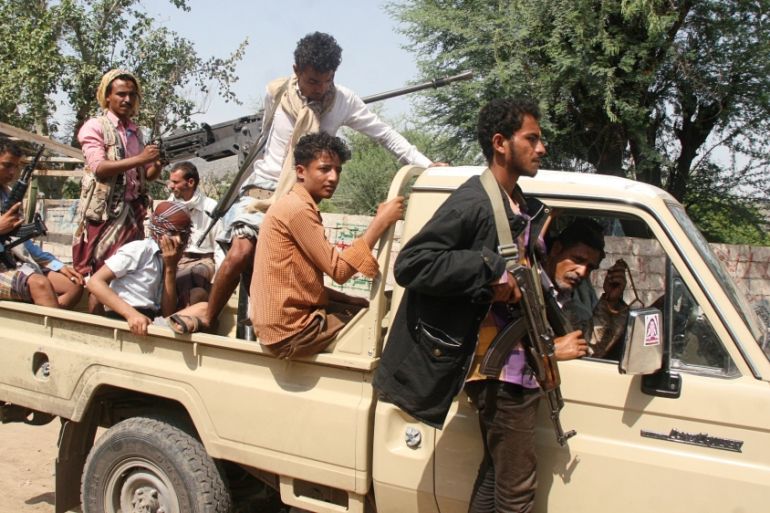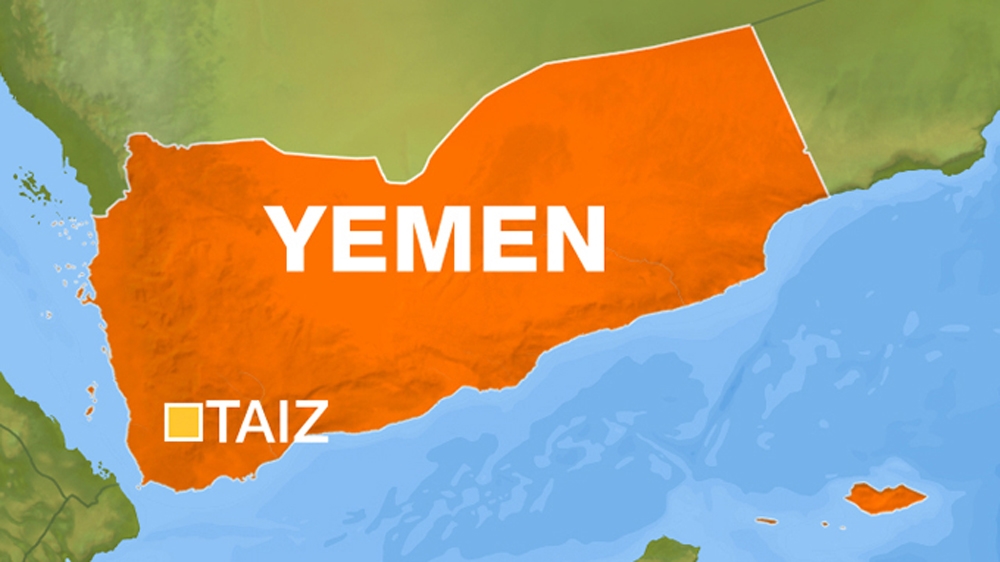Dozens killed in clashes around Yemen’s besieged Taiz
Both pro-government forces and Houthis suffer losses as they clash in area overlooking strategic Bab al-Mandab Strait.

Dozens of people have been killed in heavy fighting between Houthi rebels and pro-government forces in Yemen’s war-torn central city of Taiz.
Sadeq al-Hassani, a spokesman for forces loyal to the country’s exiled President Abd-Rabbu Mansour Hadi, said on Thursday that 27 Houthis and 13 pro-government fighters were killed in clashes around Taiz, the AFP news agency reported.
Keep reading
list of 4 itemsHouthis say they will target Israel-bound ships anywhere within their range
How will Iran respond to Israel’s attack on its Damascus consulate?
US sanctions shipping firm accused of links to Iran, Yemen’s Houthis
On Wednesday, pro-government officials had reported that five Houthis were killed when loyalists backed by Arab coalition air strikes fought off a rebel assault in Kahbub, a mountainous area overlooking the strategic Bab al-Mandab Strait at the entrance to the Red Sea.
|
|
Al Jazeera cannot independently verify the death tolls and the rebels rarely acknowledge their losses.
More than 200,000 civilians have been caught up in the fighting in Taiz, a city between the rebel-held capital of Sanaa and the southern port city of Aden, which has become one of the major front lines in the battle for control of Yemen.
For months, aid agencies have warned of a major humanitarian disaster in the city. There are frequent reports of dire food and water shortages, and of hospitals struggling to function without access to fresh medical supplies.
Yemen has been torn apart by conflict since 2014, when Houthi rebels, allied with troops loyal to former president Ali Abdullah Saleh, captured large expanses of the country, including Sanaa.
The Arab coalition, assembled by Saudi Arabia, launched an air campaign against the rebels in March 2015.
Since then, more than 10,000 people have been killed and 2.8 million driven from their homes.
Across the country, at least 14 million people, more than half of the population, are in need of emergency food and life-saving assistance.
